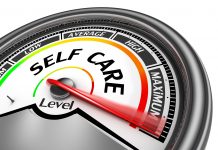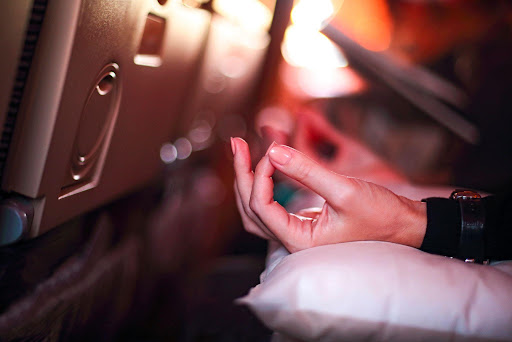Most people who have a fear of flying (aerophobia) experience some sort of claustrophobia, acrophobia (fear of heights), or anxiety about crashing. Any combination of these intense fears can manifest into symptoms such as:
- Nausea and stomach pain
- Shortness of breath
- Flushed skin
- Shaking
- Irritability
- Disorientation
- Chills
- Sweating
Because of aerophobia, entire trips may be postponed indefinitely, leaving newborns unseen, weddings unattended, and fabulous vacations untaken. Some individuals may even lose their jobs or not advance in their careers because they just can’t seem to get on that work flight or attend that out-of-state conference via plane.
In reality, flying is a safe form of travel and one that should be taken advantage of, if possible. Seeing the world (and your favorite people in it) is well-worth the challenge, and fortunately, there are ways to improve any flying experience — even if you have aerophobia.
How to Calm Your Fear of Flying on Your Next Plane Trip
Tip #1 – Plan something to absorb yourself on the flight.
Does your favorite author have a new book out? Is there a movie you’ve been dying to see? Are you right about to finish a crochet or knitting project that’s been long in the works? Save these things for the flight as it will give you something to look forward to.
In fact, distraction is one of the best ways to avoid tumbling into a cavern of fear as your flight begins to take off. As soon as you get on the plane, crack open the last chapter of that book or get started knitting (in-flight movies may not be available right away; though you may be able to watch something on your phone or computer).
If these options don’t interest you, consider starting up a conversation with the person you’re flying with or a row-mate. Even small talk can be a good distraction.
Tip #2 – Try cannabis or cannabidiol (before arriving at the airport).
Many flyers make the mistake of calming their flying fears with alcohol. And while it’s true that a quick beer or shot of rum before a flight can certainly relax your senses, it’s also quite common to overdo it. In turn, this can result in an upset stomach, headache, and fuzzy thinking that can actually make the flying experience worse.
A better option may be cannabis or cannabidiol (CBD). Both products have known relaxing and calming effects, and when used correctly, few side effects.
It’s best to take your cannabis or cannabidiol before you arrive at the airport (unless you are truly familiar with the legality of bringing any of these products on your flight). The good news is that even using them at home can provide lasting calming effects, which will stay with you during your flight. You can purchase a variety of THC- and CBD-based products at your Missouri dispensary.
Tip #3 – Fly with a friend or family member.
If you struggle with a true fear of flying, your experience may be worse when you fly alone, so don’t underestimate the benefit of a support person.
Whether it’s a friend, trusted co-worker, spouse, or another family member, this should be someone who doesn’t have a fear of flying and who can help distract you and/or keep you calm if you have a “flare up” of the senses on your flight. Holding hands, looking at a magazine together, or chatting can be truly effective when your fears get the better of you.
Tip #4 – Get educated about flying.
Distractions and calming remedies work for many people, but some people need facts. The good news is there are many facts about flying that should calm your fears.
For one thing, it’s one of the safest modes of travel. Driving in a car or on a bus are far more dangerous, according to statistics. The thing that makes driving more “desirable” to many fearful flyers is the personal control (technically speaking, you often have the power to save yourself in a car crash; on a plane, that’s generally up to the pilot, not you).
Another useful point of knowledge pertains to turbulence. What is turbulence anyway? Many flyers assume it’s something to worry about: The more frequent the turbulence, the more likely your plane is to go down. That’s not actually true. In reality, turbulence is just a bit of rocking due to wind currents. Think of it as a bumpy road when you’re driving or a slightly wavy lake while boating.
While certainly worth pursuing, getting over a fear of flying is no easy task. And sometimes, you’ll need to fly sooner rather than later. In these situations, try the tips listed above instead of white-knuckling it. Your flight may not be perfectly smooth and worry-free, but it should be greatly improved from the norm.




























